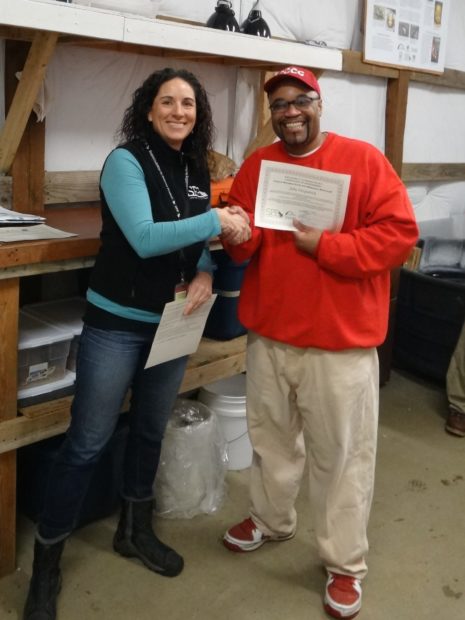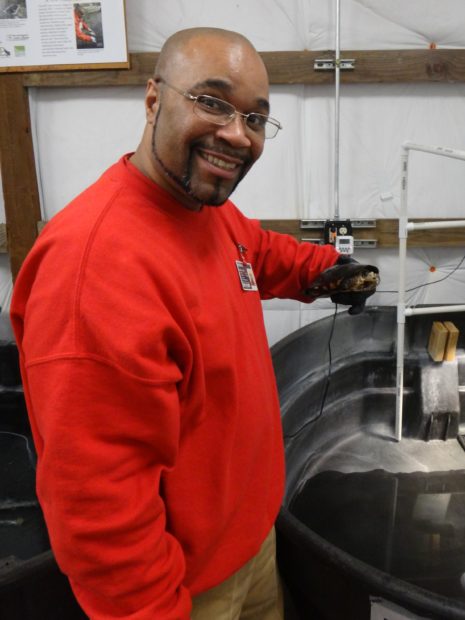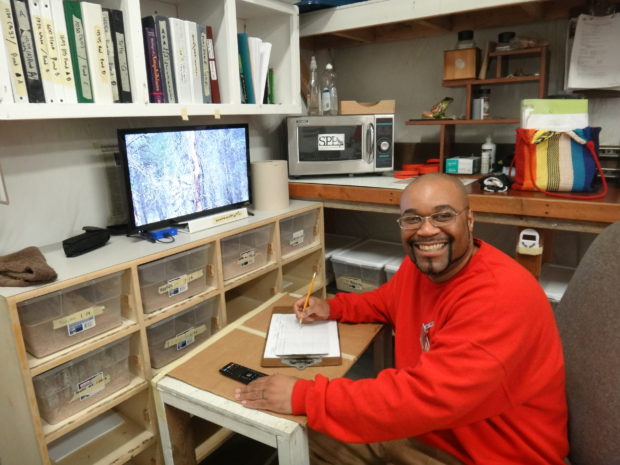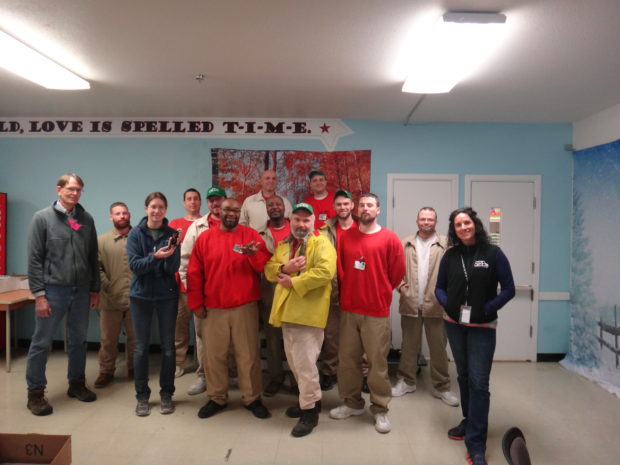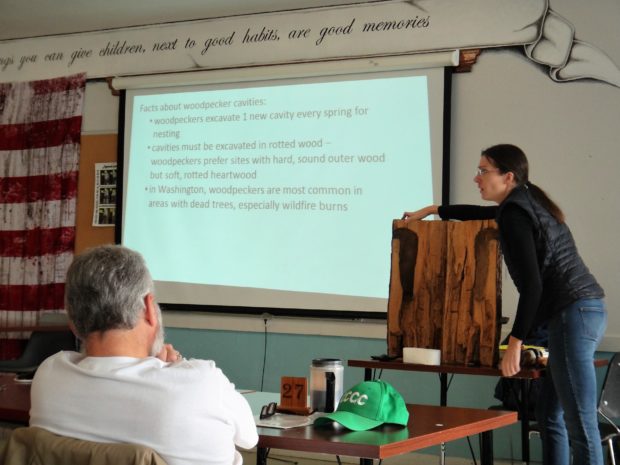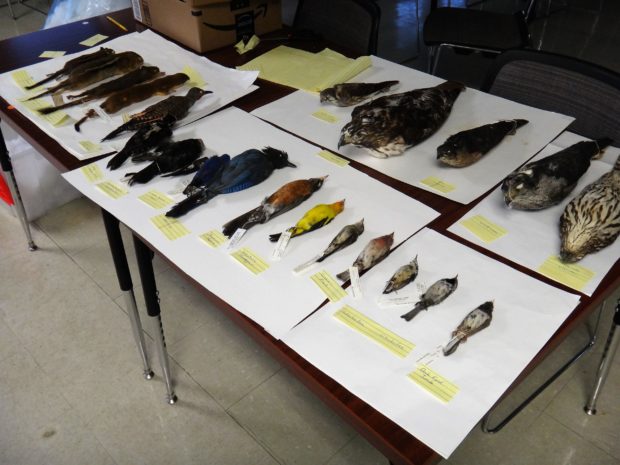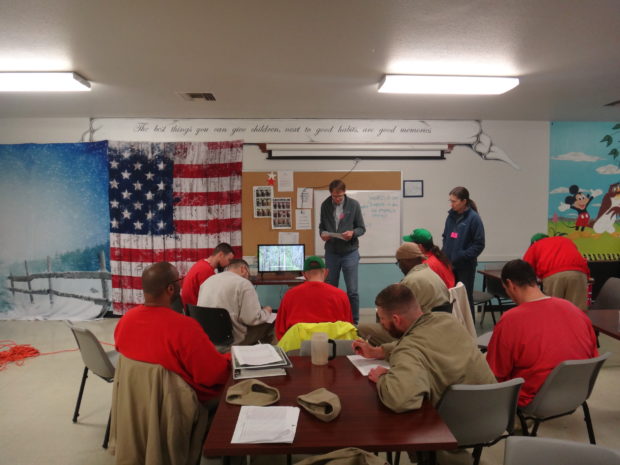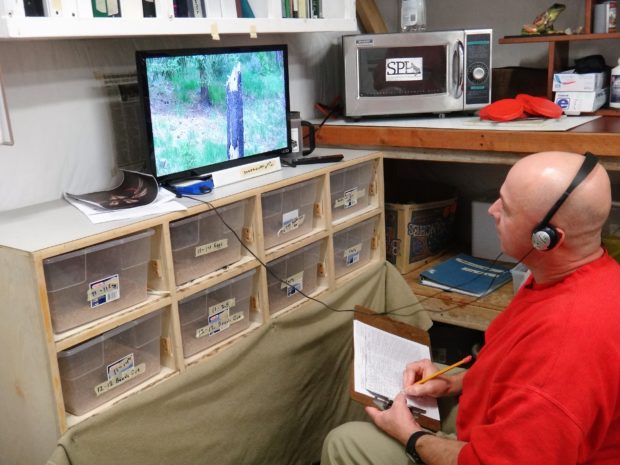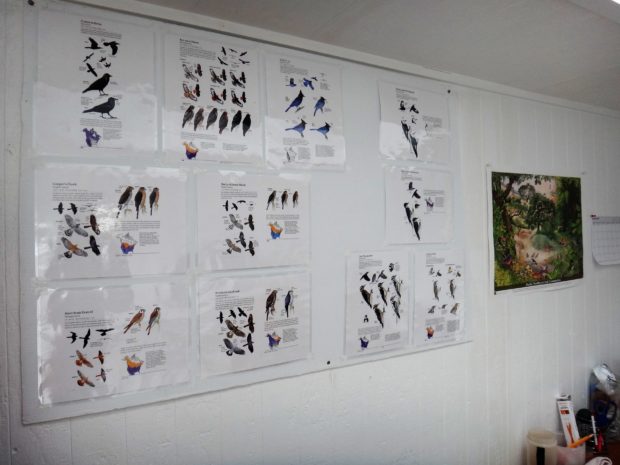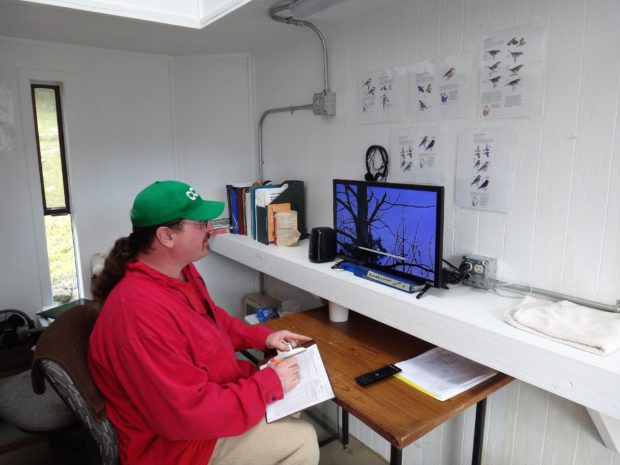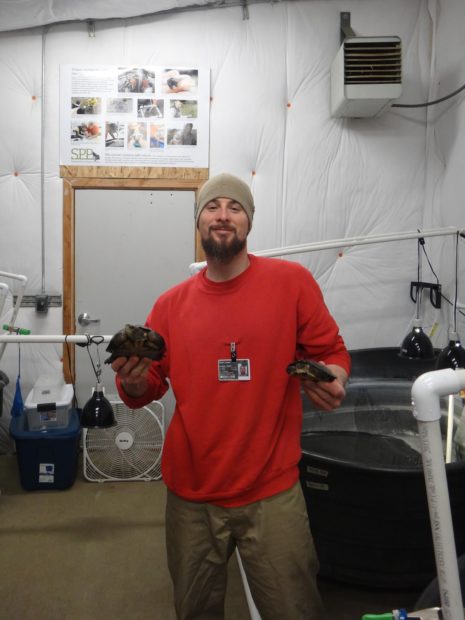Text and photos by Bethany Shepler, SPP Green Track Coordinator
At first glance, Coyote Ridge Corrections Center (CRCC) does not look very green, but superficial looks can be deceiving; it’s sustainable programming and practices are the most impressive of any correctional facility. CRCC’s main campus is LEED Gold certified, the first prison in the world to hold this accomplishment! (Check out this article about CRCC’s sustainable standard.)
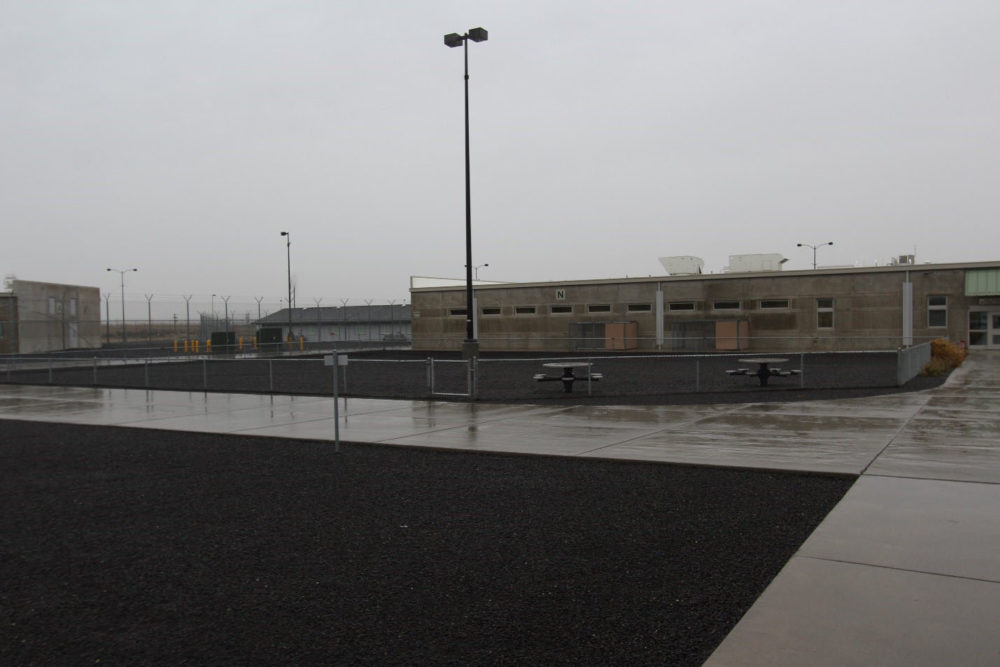
At first glance Coyote Ridge looks very gray. This was especially true when I visited in overcast, rainy weather.
I visited the prison in late November, and had the chance to tour the programs and meet with partners. The sustainable practices of the facility were highly impressive, but even more impressive were the staff who work there and the inmates who have dedicated their lives to learning, education, and environmental activism. I met with the instructors for Roots of Success and we talked about the program, the facility’s annual Environmental Awareness Day, and the many hopes they have for advancing sustainability programming at Coyote Ridge.
I am continually impressed by the people I get to work with, and the inmates and liaisons at Coyote Ridge are exemplary program representatives. I asked what could be done to improve their program and the inmates unanimously agreed “more books and readings about the environment, the sciences, sustainability, environmental activism, and any other subject along those lines.” They want to learn as much as they can and are utilizing every resource they have access to.
Coyote Ridge has developed a “Sustainability Passport” to track and recognize participation. As incarcerated individuals complete a program, they get a stamp on their “passport.” A regular offering is the prison’s Sustainability Lecture Series, similar to the Environmental Workshop Series at two prisons west of the Cascades. They bring in outside experts to deliver lectures and seminars on environmental issues and sustainability. Guests have come from organizations like the Department of Ecology, the local beekeeping association, and experts on the Hanford Site.
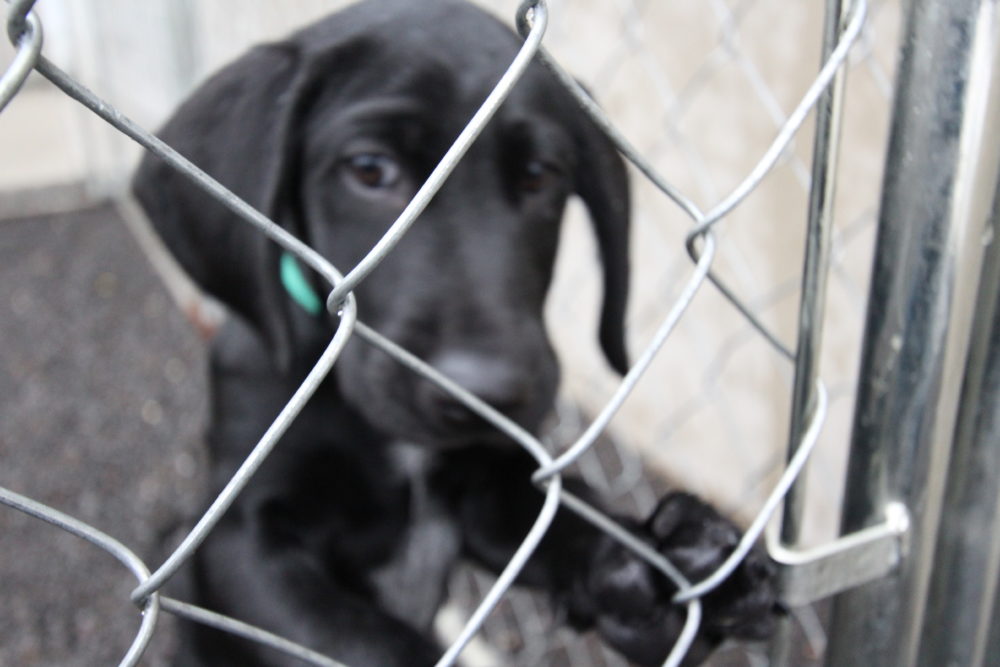
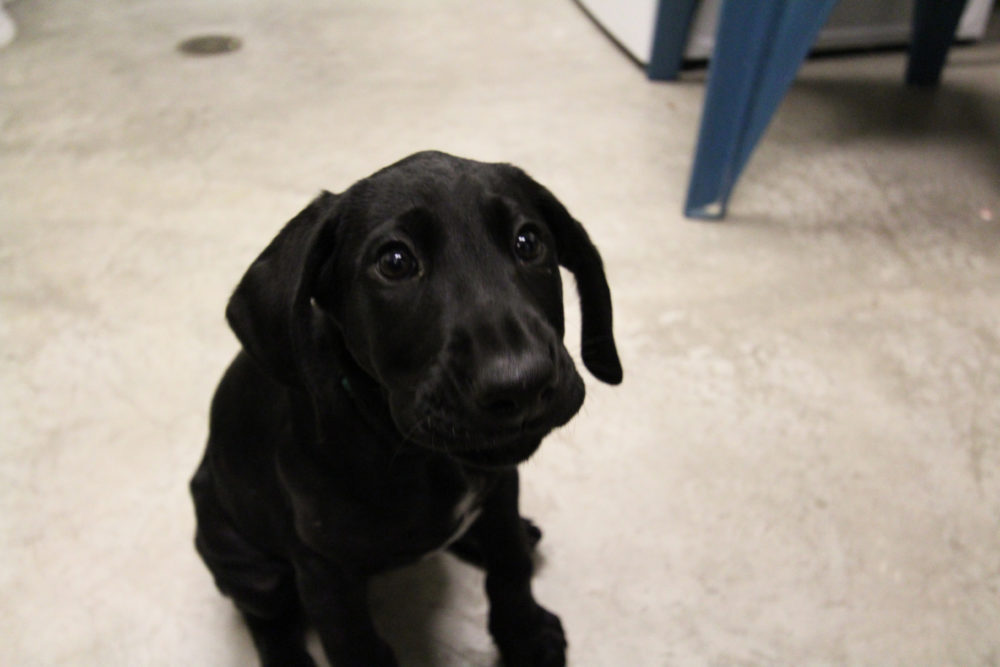
This is Bentley. He is a handsome, energetic, lab mix puppy that was brought to the prison with the rest of his litter to be raised and trained by inmate dog handlers. He and his litter-mates have already been adopted, and some by staff members at the prison. Many staff members adopt shelter dogs that the inmates train because they get to know and love the dogs during their time at the facility.
Coyote Ridge hosts a beautiful, thriving dog program. Incarcerated individuals have played a greater leadership role in this program compared to other prison pet programs we know. The dogs that come to the facility are from Benton Franklin Humane Society and Adam County Pet Rescue. They come to the prison because the local shelter doesn’t have the space or time to care for the dogs; because it’s a pregnant dog that can receive inmate handlers’ attention 24 hours a day; or because the animal has been abused and needs extra-gentle care and attention to learn to trust people again. The dogs work with a variety of trainers while they’re at the facility so that they learn to listen and be comfortable around different people.
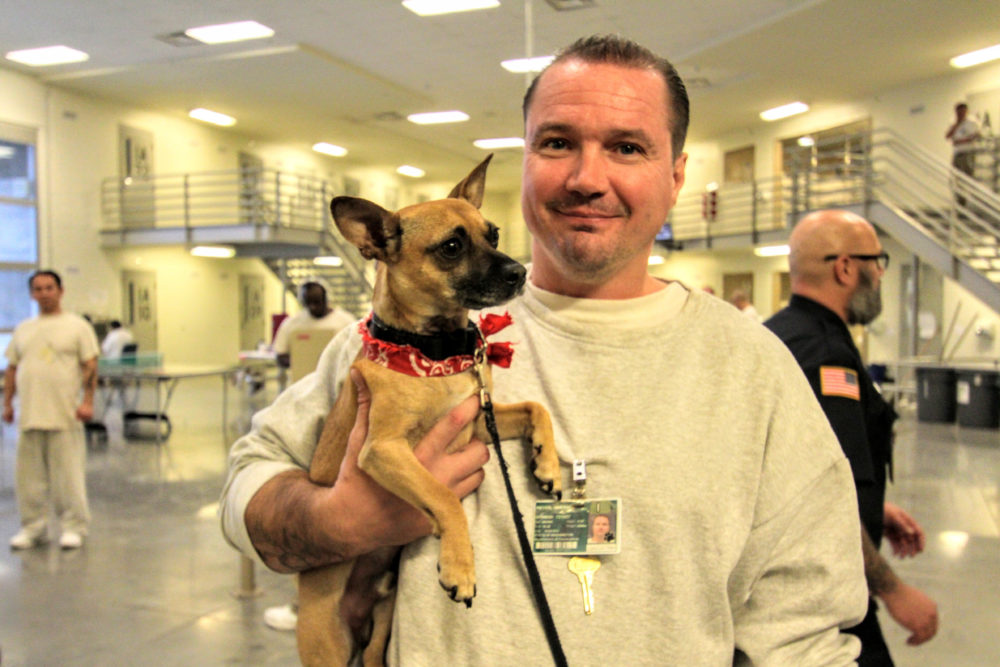
This is Shannon Meyer. He is one of the inmate dog handlers at CRCC and this was the current dog he’s working with, Rocky. When Rocky came to the prison he wouldn’t let anyone touch him and would get aggressive easily. Mr. Meyer has been working with Rocky for several weeks to get him to trust people and is pleased with his progress. Rocky’s red bandanna signals that he may not respond well to being pet or held by anyone other than his handler, but he happily let me pet him – proof of his progress.
The handlers at CRCC look like they love what they do and see the value in their work with the dogs. One of the handlers, Mr. Meyer, had this to say: “When I got here (in prison) it was just about doing my time, but now, with my dog, everything is about taking care of him and my life is about him.”
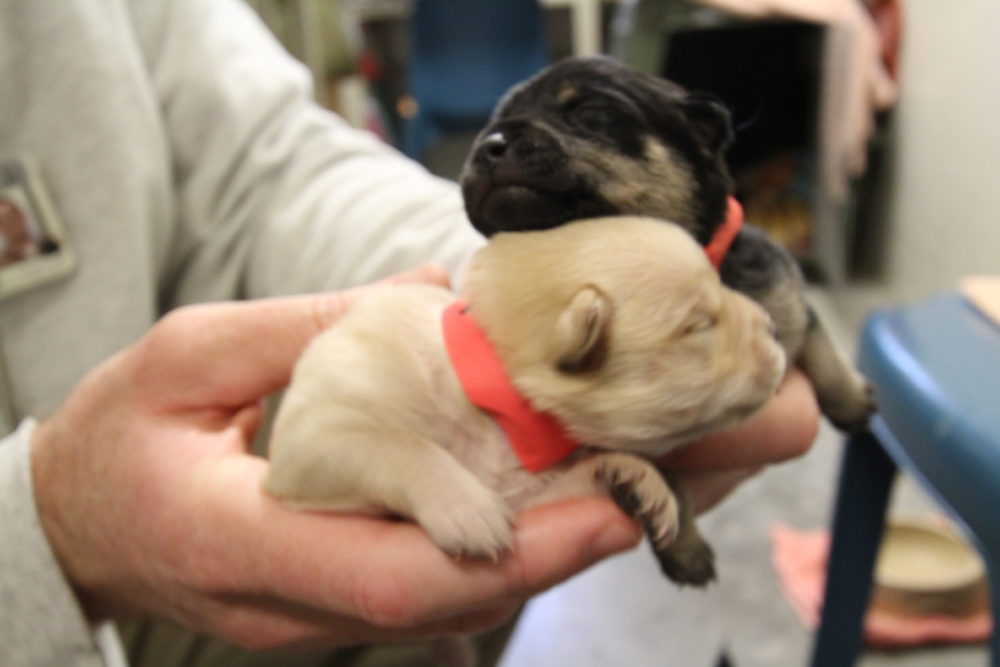
I also met these 8-day old puppies who were born in the prison. Their mother came to prison pregnant and gave birth to her puppies in the handler’s cell. Her handler, Mr. Archibald, will care for her and her puppies until they are ready and able to be adopted.
On all fronts, I was impressed by the greenness of programming and attitudes at the prison. Keep up the excellent work, Coyote Ridge!
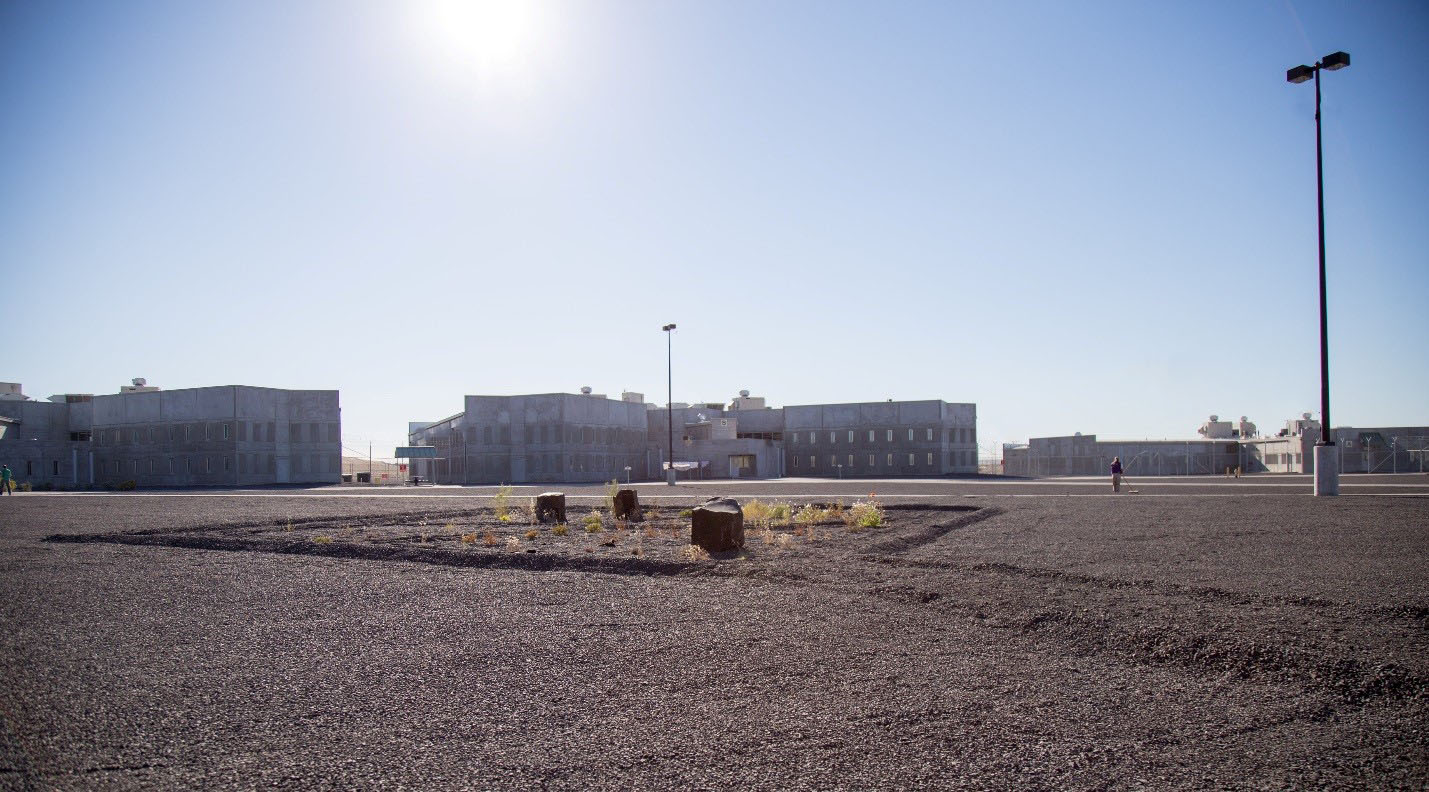 CRCC during the summer. The picture is looking at some of the units and the courtyard with a rock garden in the center. The gardens at CRCC all feature native plants and rock designs. Photo by Ricky Osborne.
CRCC during the summer. The picture is looking at some of the units and the courtyard with a rock garden in the center. The gardens at CRCC all feature native plants and rock designs. Photo by Ricky Osborne.
